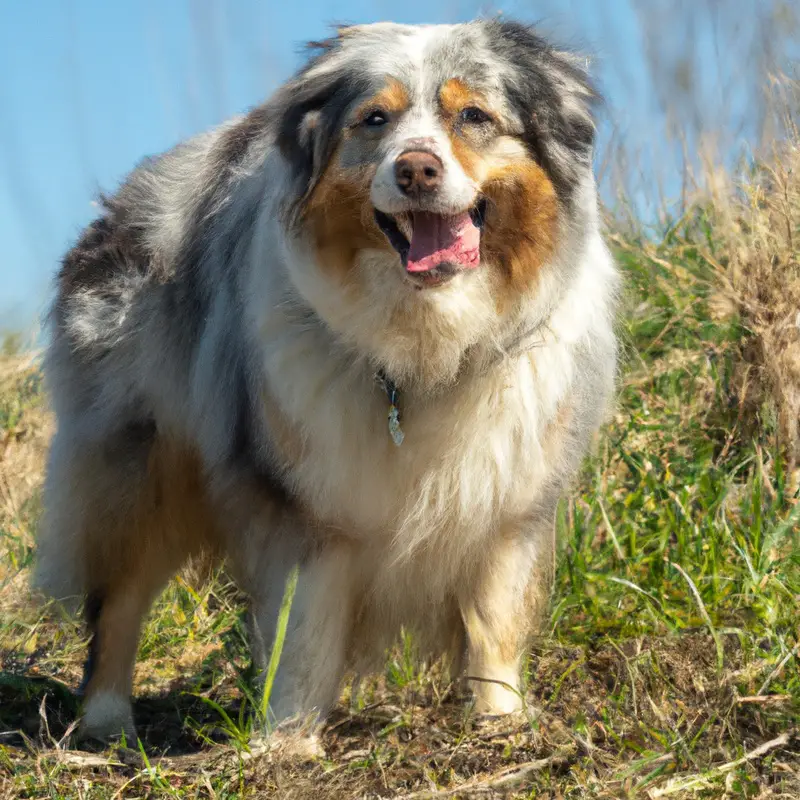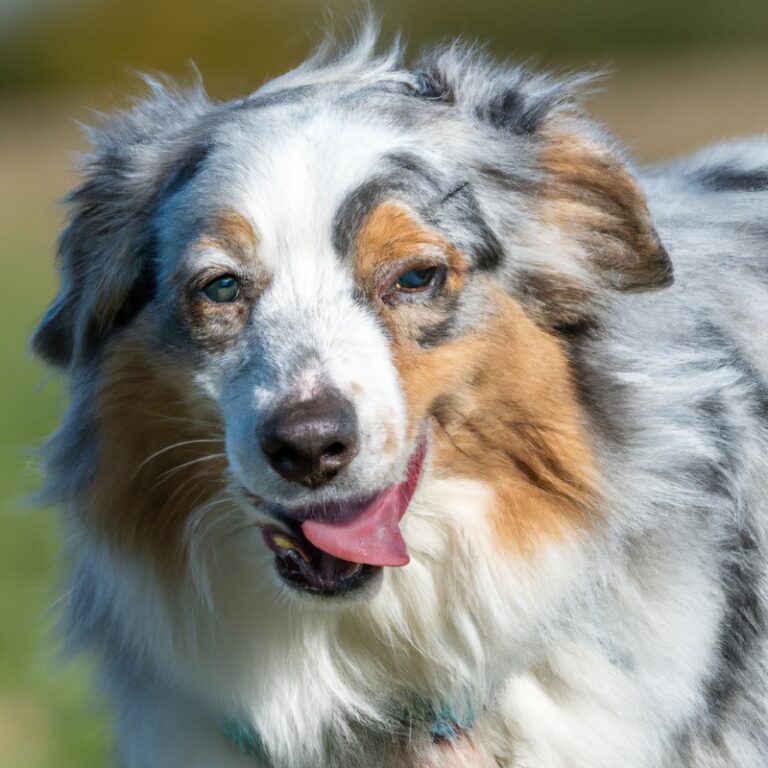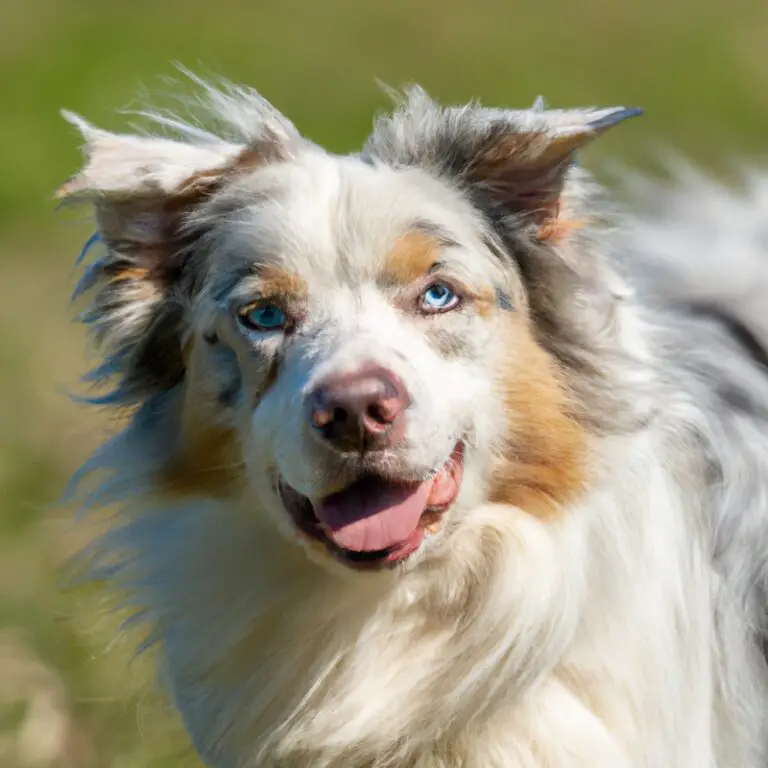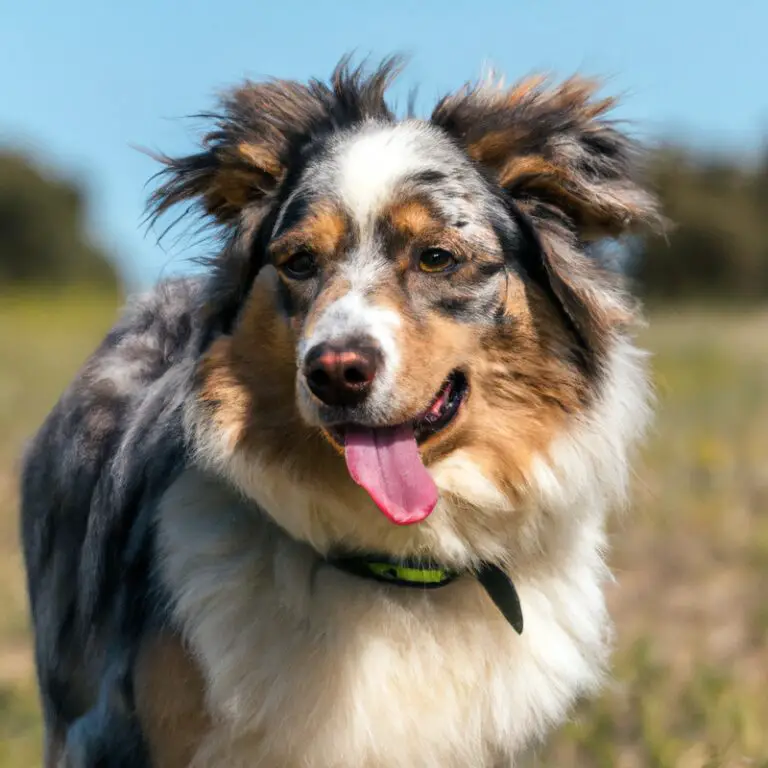Can Australian Shepherds Be Trained To Be Good With Small Dogs?
Key Takeaways:
- Australian Shepherds can be trained to be good with small dogs, but early socialization is crucial.
- Proper training and positive reinforcement can help Australian Shepherds develop positive behaviors towards small dogs.
- Supervision is important when introducing Australian Shepherds to small dogs to ensure a safe and positive interaction.
- Consistency in training and exposing Australian Shepherds to different small dogs can help them become more tolerant and friendly.
Do you have an Australian Shepherd and want to know if they can get along with small dogs? Well, you’ve come to the right place! As a dog training expert with years of experience, I’m here to shed light on this topic.
Australian Shepherds, with their unique temperament and characteristics, can indeed be trained to be good with small dogs.
However, it requires understanding their breed, effective socialization techniques, and consistent training methods. In this article, I’ll guide you through the process of introducing and training your Australian Shepherd to peacefully coexist with small dogs.
So, let’s dive in and create a harmonious four-legged family!
| Australian Shepherds | Small Dogs | |
|---|---|---|
| Trainability | Highly trainable | Varies by individual |
| Temperament | May have herding instincts, but can be socialized | Varies by breed |
| Size | Medium to large | Small |
| Energy Level | High energy | Varies by breed |
| Socialization | Important for positive interactions | Important for positive interactions |
| Training Techniques | Positive reinforcement works best | Positive reinforcement works best |
| Supervision | May require close supervision during interactions | May require close supervision during interactions |
| Potential for Compatibility | Possible, but not guaranteed | Possible, but not guaranteed |
Understanding the Australian Shepherd’s Temperament
Overview of the Australian Shepherd breed
The Australian Shepherd is a versatile and intelligent breed that originated in the United States, despite its name. Known for their medium-sized build and striking coat colors, Australian Shepherds are highly energetic and require plenty of physical and mental stimulation.
They were originally bred for herding livestock and have a strong work drive.
With proper training and socialization, Australian Shepherds can make wonderful companions and excel in various activities such as agility, obedience, and even therapy work. However, it’s important to note that they are an active breed that thrives in an environment where they can be mentally engaged and physically active.
They require consistent training, exercise, and attention to be happy and well-behaved members of the family.
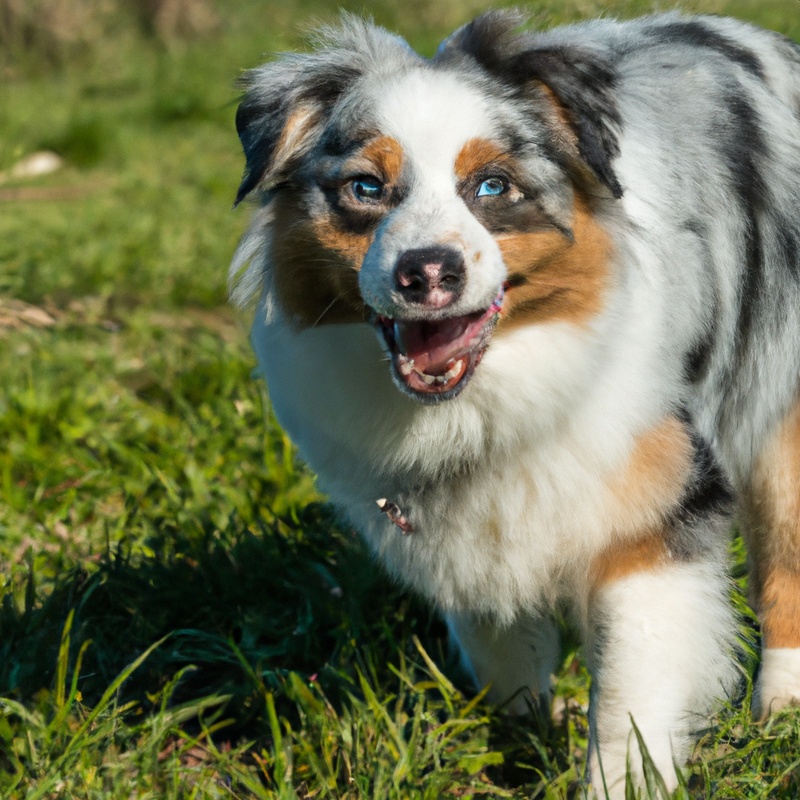
Typical temperament traits of Australian Shepherds
Australian Shepherds have distinctive temperament traits that make them unique. Here are a few typical traits you can expect from this breed:
- High Energy: Australian Shepherds are known for their boundless energy. They thrive on physical activity and mental stimulation. Regular exercise and engaging activities are essential to keep them happy.
- Intelligence: These dogs are highly intelligent and have a keen ability to learn. They excel in various training activities, including obedience, agility, and even tricks. Their intelligence also means they need mental challenges to prevent boredom.
- Herding Instincts: Australian Shepherds have a strong herding instinct bred into them. This means they may try to herd smaller animals or even children. Early socialization and training can help manage this behavior.
- Loyalty: Australian Shepherds are fiercely loyal to their families. They form strong bonds and will go to great lengths to protect and please their loved ones. This loyalty makes them excellent companions and potential therapy or service dogs.
- Alertness: These dogs have a sharp alertness and are often excellent watchdogs. They are quick to notify their owners of any potential danger or suspicious activity. This trait can make them vigilant and at times vocal.
Remember, while the Australian Shepherd breed has these typical temperament traits, individual dogs may vary. It’s important to consider an individual dog’s personality, socialization, and experiences when understanding their temperament.
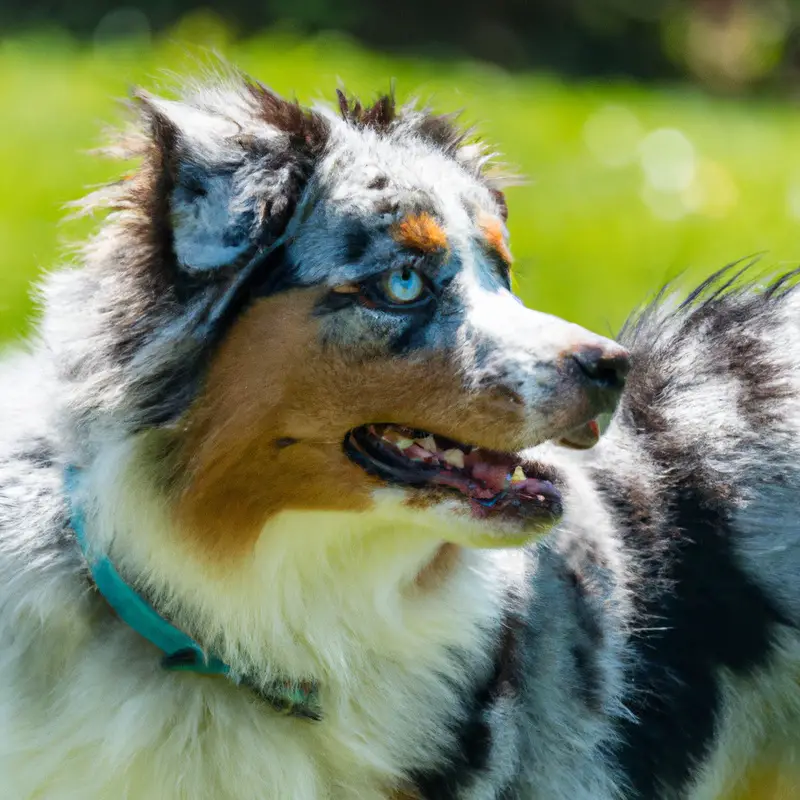
Socialization and its impact on a dog’s behavior
Socialization plays a crucial role in shaping a dog’s behavior. When a dog is properly socialized, they learn to interact with other dogs, animals, and humans in a positive and appropriate way.
This helps them become well-adjusted and confident companions.
Socialization should begin early in a dog’s life, ideally during their puppyhood. The more experiences they have during this critical period, the better equipped they will be to handle various situations as they grow older.
It is important to expose them to different environments, sounds, smells, and people of all ages and backgrounds.
By exposing your dog to a wide range of situations, you are helping them understand that the world is not something to fear or be anxious about. This can prevent the development of behavioral problems such as aggression or fearfulness.
Socialization also helps dogs develop good manners.
They learn how to greet and interact with other dogs politely, as well as how to play and share toys appropriately. This is especially important when introducing an Australian Shepherd to small dogs, as their herding instincts can sometimes lead to chasing or nipping behaviors.
Positive reinforcement training techniques can be used during the socialization process to reward desired behaviors and encourage good manners.
This includes treats, praise, and playtime as rewards for appropriate interactions with other dogs and small animals. It is important to note that socialization is an ongoing process.
Even if your dog has had positive experiences in the past, continue to expose them to new situations and environments to maintain their social skills.
Regular socialization is vital for preventing behavioral issues and ensuring your dog is comfortable and well-behaved in various settings.
Introducing Australian Shepherds to Small Dogs
General tips for introducing Australian Shepherds to small dogs
Introducing Australian Shepherds to small dogs can be a gradual process, but with some general tips, it can be successful.
- Start with supervised interactions: When introducing your Australian Shepherd to a small dog, always supervise their interactions to ensure the safety of both animals.
- Keep initial meetings calm and controlled: It’s important to create a calm and controlled environment during the first meetings. Avoid loud noises or sudden movements that may startle either dog.
- Gradual introductions: Begin by allowing the dogs to see and sniff each other from a distance. Gradually decrease the distance over time, while still maintaining control of the situation.
- Utilize positive reinforcement: Reward both dogs for calm behavior during these interactions. This will help them associate positive experiences with each other’s presence.
- Address any signs of discomfort: Be observant of any signs of discomfort or aggression from either dog. If you notice any negative behaviors, separate them and try again later or seek professional help if needed.
With these general tips, you can help your Australian Shepherd and small dog form a positive relationship. It may take time and patience, but with consistency and proper training, they can learn to get along well.

Supervised interactions between Australian Shepherds and small dogs
Supervised interactions are essential when introducing Australian Shepherds to small dogs. It’s important to closely monitor their behavior to prevent any potential problems.
When they’re together, maintain control by keeping them on a leash and using a muzzle if necessary.
Look out for any signs of aggression, fear, or discomfort. Reward positive behavior and redirect any negative interactions.
Gradually increase their time together, always under supervision, to help them build a positive relationship.
Patience and consistency are key in ensuring a safe and harmonious interaction between Australian Shepherds and small dogs.
Utilizing positive reinforcement training techniques
When it comes to training Australian Shepherds to be good with small dogs, utilizing positive reinforcement techniques is crucial. This approach focuses on rewarding desired behaviors rather than punishing unwanted ones.
By consistently rewarding your Australian Shepherd for calm and friendly interactions with small dogs, you can reinforce and encourage their positive behavior.
One effective positive reinforcement technique is using treats or praise to reward your Australian Shepherd whenever they display friendly behavior towards small dogs. For example, if they approach a small dog calmly or play gently with them, give them a treat or shower them with praise.
This positive association will help them understand that good things happen when they are friendly to small dogs.
Consistency is also key when utilizing positive reinforcement. Make sure to reward your Australian Shepherd every time they exhibit desired behavior, and be patient as they learn.
It’s important to remain calm and avoid punishing or scolding your dog when they make mistakes, as this can create fear and anxiety.
In addition to treats and praise, you can also incorporate clicker training into your positive reinforcement routine. The clicker serves as a conditioned reinforcer, signaling to your Australian Shepherd that they have done something correctly.
Simply click the clicker and then reward your dog immediately after they display the desired behavior.
Remember, training your Australian Shepherd to be good with small dogs takes time and patience. By consistently utilizing positive reinforcement techniques and rewarding their good behavior, you can help them develop positive associations and ultimately improve their interactions with small dogs.
Training Australian Shepherds to Get Along with Small Dogs
Building a foundation of basic obedience skills
Building a foundation of basic obedience skills is essential when training Australian Shepherds to get along with small dogs. Teaching commands like sit, stay, come, and leave it will help establish control and communication between you and your dog.
Consistently use positive reinforcement techniques, such as treats or praise, to reward good behavior.
Start training in a calm and quiet environment, gradually introducing distractions. Remember, patience and consistency are key in building a solid foundation for your Australian Shepherd’s obedience skills.
Introducing Australian Shepherds to small dogs in controlled environments
Introducing Australian Shepherds to small dogs in controlled environments is an important step for successful interactions. Start by choosing a safe and neutral space where both dogs can comfortably explore.
Keep the introductions short and supervised, gradually increasing the duration as they become more comfortable.
Use positive reinforcement techniques to reward calm and appropriate behavior from both dogs. Always prioritize the safety and well-being of both animals.
Remember, patience and consistency are key in this process.
Gradual desensitization to small dogs’ presence
To help Australian Shepherds become more comfortable around small dogs, a technique called gradual desensitization can be used. This involves exposing the Australian Shepherd to small dogs in a controlled and gradual manner.
The goal is to gradually reduce any fear or anxiety they may have towards small dogs by gradually increasing their exposure over time.
This could start with brief, supervised interactions from a distance and gradually progress to closer interactions. By taking this approach, we can help the Australian Shepherd feel more at ease around small dogs and potentially foster a positive and harmonious relationship between them.
Handling Challenges and Potential Issues
Identifying signs of aggression or discomfort in Australian Shepherds
Identifying signs of aggression or discomfort in Australian Shepherds is essential for maintaining a safe and harmonious environment. As an expert on the topic, I can share some key indicators to watch out for.
Keep an eye on any growling, snarling, or snapping, as these are clear signs of aggression.
Additionally, if your Australian Shepherd exhibits rigid body posture, such as stiffening or standing tall, it may indicate discomfort or unease. Pay attention to intense staring or raised hackles, which are also signs of potential aggression.
Lastly, if your Australian Shepherd tries to hide or withdraw from social interactions, it may be a sign of discomfort or fear.
Identifying these signs early on allows you to address any issues promptly and seek professional help if needed.
Addressing any behavioral issues promptly
Addressing any behavioral issues promptly is crucial when it comes to ensuring the well-being and harmony of your Australian Shepherd and small dogs. If you notice any signs of aggression, fear, or discomfort in your Australian Shepherd during interactions with small dogs, it’s important to take action right away.
Promptly addressing behavioral issues involves observing and understanding the triggers or situations that lead to undesirable behavior.
With this knowledge, you can create a plan to modify your Australian Shepherd’s behavior and help them feel more comfortable around small dogs. One effective approach is to seek professional help from a dog behaviorist or trainer who specializes in working with Australian Shepherds.
They can provide you with specific strategies and techniques to address the behavioral issues and support you throughout the process.
Additionally, consistency is key when addressing behavioral issues. It’s important to establish clear rules and boundaries for your Australian Shepherd’s interactions with small dogs and consistently reinforce them.
This helps your Australian Shepherd understand what is expected of them and promotes positive behavior.
Positive reinforcement training techniques can also be highly effective in addressing behavioral issues. By rewarding your Australian Shepherd for calm and appropriate behavior around small dogs, you can reinforce positive associations and encourage desired behavior.
Remember, addressing behavioral issues promptly requires patience and time.
It may take some trial and error to find the best approach for your Australian Shepherd, but with dedication and consistency, you can help them learn to get along with small dogs and create a harmonious environment for all pets in your home.
Seeking professional help if needed
If you’re having difficulties training your Australian Shepherd to be good with small dogs, don’t hesitate to seek professional help. A professional dog trainer or behaviorist can provide expert guidance tailored to your specific situation.
They can assess your dog’s behavior, identify any underlying issues, and create a customized training plan to address them.
Professional help can be invaluable in ensuring the safety and well-being of both your Australian Shepherd and small dogs. Don’t hesitate to reach out and get the assistance you need.
The Importance of Patience and Consistency
Understanding that training takes time
Training a dog, especially an Australian Shepherd, takes time. It’s important to understand that training is not an overnight process.
Each dog is unique and learns at their own pace.
Rushing the training process can lead to frustration for both you and your dog. Patience is key when it comes to training.
It’s important to give your Australian Shepherd enough time to understand and process the commands or behaviors you’re teaching them.
They may need to practice the same command multiple times before fully grasping it. Don’t get discouraged if progress seems slow – keep working with your dog consistently and patiently.
Consistency is another crucial aspect of training.
Dogs learn best through repetition and routine, so it’s important to be consistent in both your training methods and the rules you set for your Australian Shepherd. This helps them understand what is expected of them and reinforces good behavior.
While it may be tempting to rush through the training process or expect quick results, it’s important to celebrate small victories along the way.
Each step forward, no matter how small, is a success. Recognize and reward your Australian Shepherd’s progress, as this positive reinforcement encourages them to continue learning and improving.
Training takes time, patience, and consistency.
So, embrace the journey and enjoy the bond you are building with your Australian Shepherd.
Consistency in training methods and rules
Consistency in training methods and rules is key when it comes to effectively training Australian Shepherds to be good with small dogs. By maintaining a consistent approach, you establish clear boundaries and expectations for your dog.
This helps them understand what is acceptable behavior and what is not.
Consistency means using the same commands, rewards, and consequences every time. By doing so, you avoid confusion and make it easier for your Australian Shepherd to learn and respond appropriately.
Remember, consistency is a vital component of successful dog training, so stick to your methods and rules to ensure the best results.
Celebrating small victories in the process
In the process of training your Australian Shepherd to get along with small dogs, it’s important to celebrate the small victories along the way. Training takes time and consistency, so it’s crucial to appreciate the progress your dog is making.
Whether it’s a successful interaction or a well-executed command, acknowledging and celebrating these accomplishments will keep both you and your dog motivated.
It can be as simple as giving them verbal praise, a treat, or a favorite toy. By celebrating these small victories, you’ll create a positive and rewarding training experience for your Australian Shepherd, making the journey more enjoyable for both of you.
Final Verdict
While Australian Shepherds have a natural herding instinct, they can be trained to get along with small dogs through proper socialization and training techniques. It is important to introduce them in a controlled environment, use positive reinforcement, and monitor their interactions.
If any behavioral issues arise, it is crucial to address them promptly and seek professional help if necessary.
With patience, consistency, and a commitment to training, Australian Shepherds can become well-behaved and friendly companions to small dogs.

